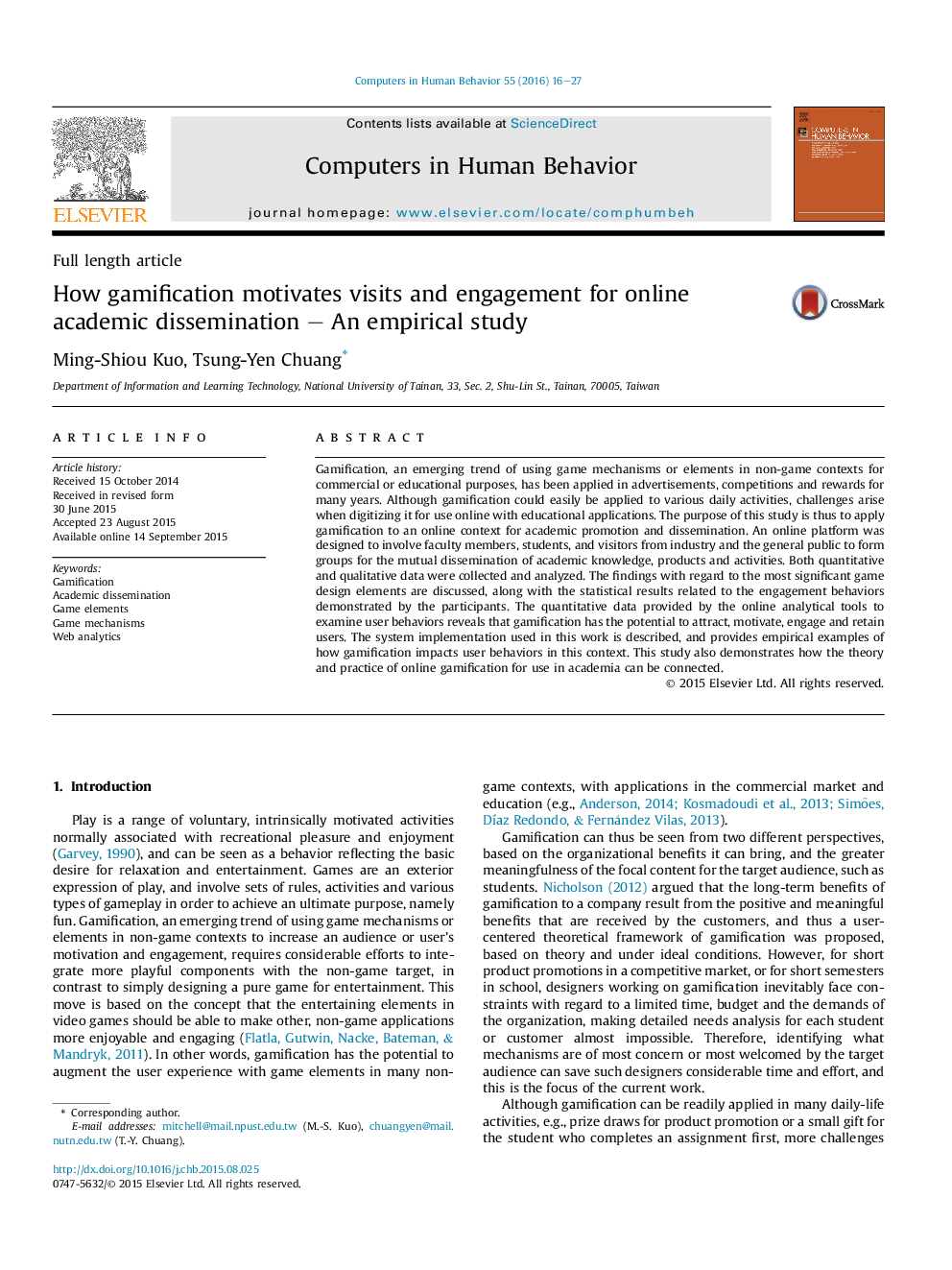| کد مقاله | کد نشریه | سال انتشار | مقاله انگلیسی | نسخه تمام متن |
|---|---|---|---|---|
| 350148 | 618432 | 2016 | 12 صفحه PDF | دانلود رایگان |
• A university level empirical gamification study for educational content and context.
• The dedicated LOPUPA platform was developed to implement gamification strategies.
• Google Analytics was used to parse the internet users' behaviors rather than classroom surveys.
• A promotion plan was proposed to attract various visitors, e.g., faculty members, students, the general public and companies.
• Key gamification mechanisms were identified for gamifying a website like LOPUPA.
Gamification, an emerging trend of using game mechanisms or elements in non-game contexts for commercial or educational purposes, has been applied in advertisements, competitions and rewards for many years. Although gamification could easily be applied to various daily activities, challenges arise when digitizing it for use online with educational applications. The purpose of this study is thus to apply gamification to an online context for academic promotion and dissemination. An online platform was designed to involve faculty members, students, and visitors from industry and the general public to form groups for the mutual dissemination of academic knowledge, products and activities. Both quantitative and qualitative data were collected and analyzed. The findings with regard to the most significant game design elements are discussed, along with the statistical results related to the engagement behaviors demonstrated by the participants. The quantitative data provided by the online analytical tools to examine user behaviors reveals that gamification has the potential to attract, motivate, engage and retain users. The system implementation used in this work is described, and provides empirical examples of how gamification impacts user behaviors in this context. This study also demonstrates how the theory and practice of online gamification for use in academia can be connected.
Figure optionsDownload as PowerPoint slide
Journal: Computers in Human Behavior - Volume 55, Part A, February 2016, Pages 16–27
